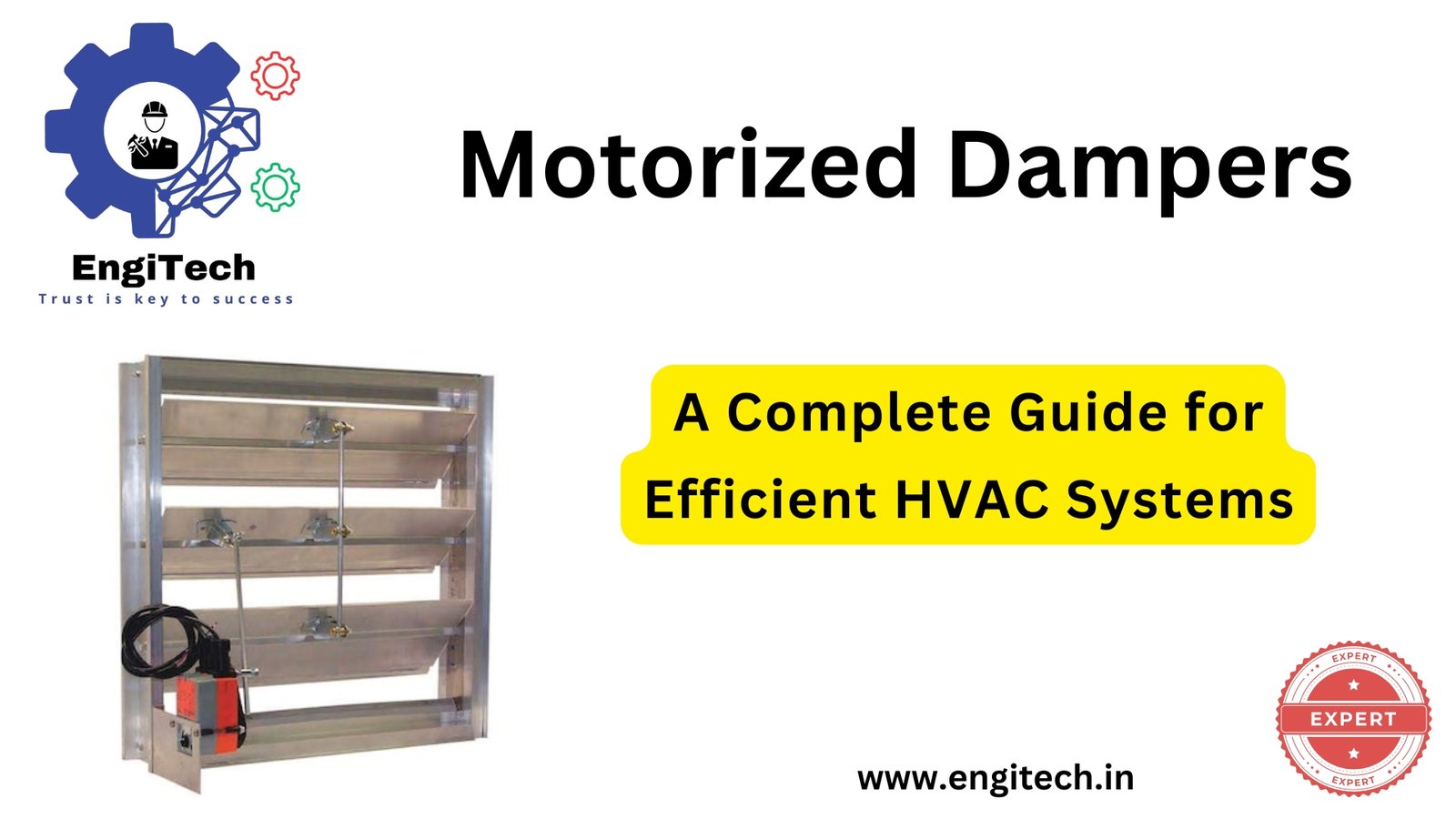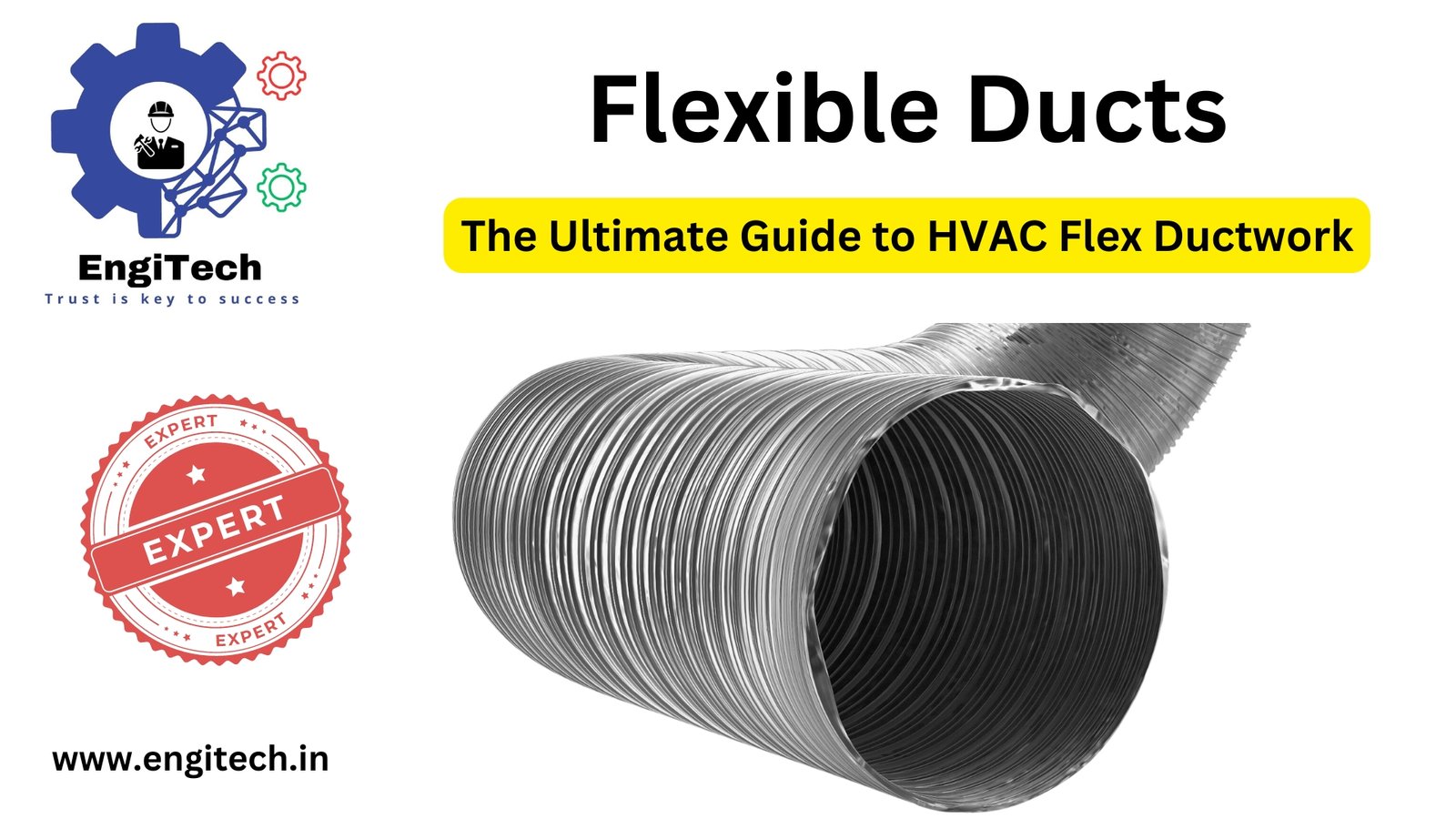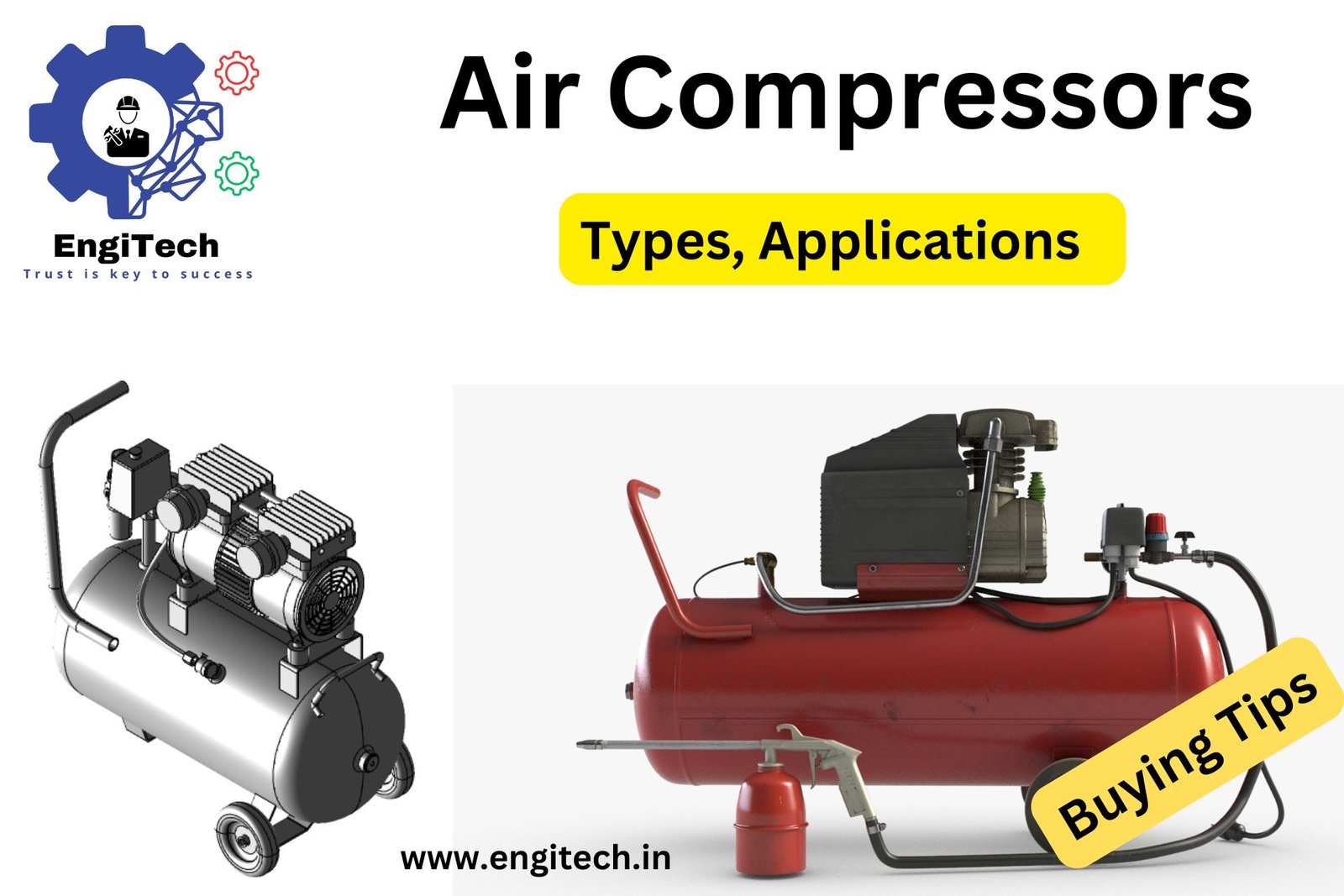Motorized Dampers: The Ultimate Guide for Efficient HVAC and Ductwork Control

Did you know that improper airflow management in HVAC systems can increase energy costs by up to 30%? This surprising figure reveals why motorized dampers have become essential components in modern heating, ventilation, and air conditioning systems. Whether you’re a homeowner looking to improve comfort and reduce utility bills or an HVAC professional seeking the best solutions for clients, understanding motorized dampers can transform your approach to climate control.
In this comprehensive guide, we’ll explore everything you need to know about motorized dampers—from basic functions to installation tips and advanced applications. By the end, you’ll have the knowledge to make informed decisions about implementing these powerful airflow management tools in your own systems.
Table of Contents
What Are Motorized Dampers and Why Do They Matter?
Motorized dampers are electronically controlled devices installed within ductwork to regulate airflow in heating, ventilation, and air conditioning systems. Unlike manual dampers that require physical adjustment, motorized dampers can be controlled remotely through thermostats, building automation systems, or smart home interfaces.
The Basic Structure and Function
At their core, motorized dampers consist of several key components:
- A metal frame that attaches to the ductwork
- Adjustable blades (typically aluminum or galvanized steel) that pivot to control airflow
- An electric actuator that powers the movement of the blades
- A control mechanism that receives signals to open, close, or adjust the damper position
When activated, the motorized actuator rotates the damper blades to the desired position, either restricting or allowing air to flow through the duct. This simple yet effective mechanism enables precise climate control throughout different zones of a building.
Types of Motorized Dampers
Not all motorized dampers are created equal. Depending on your specific needs, you might encounter these common varieties:
Zone Dampers These are the workhorses of zoned HVAC systems, allowing different areas of a home or building to maintain independent temperature settings. Zone dampers receive signals from individual thermostats and adjust accordingly to direct conditioned air where it’s needed.
Bypass Dampers When some zone dampers close, system pressure can build up. Bypass dampers automatically open to relieve this pressure, redirecting air back to the return duct and maintaining system balance.
Economizer Dampers Found primarily in commercial applications, these dampers allow outside air into the system when conditions are favorable, reducing the need for mechanical cooling and saving energy.
Fire and Smoke Dampers Safety-oriented variants that automatically close during emergencies to prevent the spread of fire or smoke through ductwork. These specialized dampers are typically integrated with building fire alarm systems.
Benefits of Installing Motorized Dampers in Your HVAC System
The strategic implementation of motorized dampers can transform your HVAC system’s performance in several ways:
Enhanced Comfort Through Zoning
One of the most significant advantages of motorized dampers is their ability to create customized climate zones. Have you ever noticed that certain rooms in your home are too hot while others remain chilly? This common problem stems from factors like:
- Varying sun exposure throughout the day
- Different ceiling heights
- Varying occupancy patterns
- Heat-generating appliances or electronics
- Differences in insulation quality
By installing motorized dampers, you can divide your space into distinct zones, each with its own thermostat. This setup allows occupants to set their preferred temperatures, eliminating hot and cold spots and maximizing comfort for everyone.
Substantial Energy Savings
Why heat or cool rooms that aren’t being used? Motorized dampers enable you to direct conditioned air only where it’s needed, when it’s needed. This targeted approach can lead to energy savings of 15-30% compared to traditional single-zone systems. The investment typically pays for itself within 2-5 years through reduced utility bills.
Extended HVAC System Lifespan
When your HVAC system doesn’t have to work as hard to maintain comfort, components experience less wear and tear. By reducing the overall runtime and eliminating the need to overcool or overheat certain areas to achieve comfort in others, motorized dampers can help extend the life of your expensive HVAC equipment.
Improved Indoor Air Quality
With more precise control over airflow, motorized dampers can help maintain better indoor air quality. They allow for strategic ventilation of different areas based on occupancy, activities, or air quality concerns. For instance, you can increase ventilation in kitchens during cooking or bathrooms during showers without affecting the entire building’s temperature.
How Motorized Dampers Work in Different Systems
Understanding how motorized dampers integrate with various HVAC configurations can help you determine the best approach for your specific situation.
Integration with Traditional Forced-Air Systems
In conventional forced-air heating and cooling setups, motorized dampers are installed at strategic points in the duct network. These dampers work in conjunction with:
- A zoning control panel that processes signals from multiple thermostats
- Individual zone thermostats throughout the building
- The main HVAC equipment (furnace, air conditioner, heat pump)
When a zone calls for heating or cooling, the control panel signals the appropriate dampers to open while keeping others closed or partially closed. Simultaneously, it activates the HVAC equipment to produce the required conditioned air.
Smart Home Integration
Modern motorized dampers can seamlessly connect with smart home ecosystems, offering unprecedented convenience and efficiency. Integration possibilities include:
- Voice control through assistants like Alexa, Google Home, or Siri
- Smartphone apps for remote monitoring and adjustment
- Occupancy sensors that automatically adjust zones based on presence
- Learning algorithms that adapt to your schedule and preferences
- Integration with other smart devices like window sensors or weather stations
This level of automation ensures optimal comfort while minimizing energy use, even when you’re away from home or asleep.
Commercial Building Applications
In larger commercial structures, motorized dampers play a crucial role in building automation systems (BAS). These sophisticated setups coordinate dampers with:
- Variable air volume (VAV) boxes
- Economizers for free cooling when outside conditions permit
- Demand-controlled ventilation based on CO2 levels
- Central building management interfaces
- Energy recovery ventilators (ERVs)
The complexity of these systems allows for extremely precise control of air distribution throughout diverse spaces like offices, conference rooms, server rooms, and common areas.
Choosing the Right Motorized Dampers for Your Needs
Selecting appropriate motorized dampers requires consideration of several factors to ensure optimal performance and compatibility with your existing systems.
Key Specifications to Consider
When evaluating motorized dampers, pay attention to these critical specifications:
Damper Size and Configuration Dampers must match your ductwork dimensions precisely. Common shapes include:
- Rectangular dampers for standard ducts
- Round dampers for spiral ductwork
- Opposed blade designs for precision control
- Parallel blade configurations for on/off applications
Actuator Type The motorized component that moves the damper blades comes in several varieties:
- Spring return actuators automatically close or open during power failures
- Non-spring return models maintain their position when power is lost
- Proportional actuators allow for incremental positioning (25%, 50%, etc.)
- Two-position actuators provide only fully open or fully closed settings
Power Requirements Most residential dampers operate on 24V AC power, while commercial applications might use:
- 120V AC systems
- 24V DC configurations
- Pneumatic actuators in some industrial settings
Control Signal Compatibility Ensure your dampers can accept signals from your intended control system:
- Digital (on/off) signals
- Analog inputs (0-10V, 2-10V, 4-20mA)
- Wireless protocols like Z-Wave, Zigbee, or WiFi
- BACnet, Modbus, or other building automation protocols
Quality Factors That Impact Performance
Not all motorized dampers deliver the same reliability and longevity. Look for these indicators of quality:
- Blade seals that prevent air leakage when closed
- Low-friction bearings for smooth, quiet operation
- Corrosion-resistant materials for durability
- UL certification for safety compliance
- Noise ratings (especially important in residential applications)
- Warranty period (5+ years indicates manufacturer confidence)
Cost Considerations and ROI
Motorized damper systems represent a significant investment, but one that typically delivers excellent returns. Budget for:
Component Costs
- Basic residential motorized dampers: $80-$200 per unit
- Commercial-grade dampers: $200-$600+ per unit
- Zoning control panels: $300-$800
- Additional thermostats: $50-$250 each
Installation Expenses Professional installation often ranges from $1,000-$3,000 for residential systems, depending on:
- Accessibility of ductwork
- Complexity of the zoning design
- Electrical modifications required
- Extent of control system integration
Return on Investment Most property owners recoup their investment through:
- Energy savings of 15-30% on heating and cooling costs
- Increased property value (especially for commercial buildings)
- Reduced maintenance costs for primary HVAC equipment
- Extended lifespan of furnaces, air conditioners, and heat pumps
Installation Process and Best Practices
Whether you’re a DIY enthusiast or working with professionals, understanding the installation process helps ensure optimal results.
Pre-Installation Planning
Before purchasing components or beginning installation:
- Conduct a Load Calculation Have a professional perform Manual J calculations to determine the heating and cooling requirements for each proposed zone.
- Create a Zoning Strategy Map out logical zones based on:
- Room usage patterns
- Similar heating/cooling needs
- Architectural divisions
- Sun exposure
- Evaluate Existing Ductwork Ensure your current duct system can accommodate dampers and zoning. Some homes may require modifications for proper balance.
- Plan Control Locations Determine optimal positions for:
- Zone thermostats (away from heat sources and drafts)
- The central control panel (accessible but protected)
- Any additional sensors
Step-by-Step Installation Overview
While professional installation is recommended, understanding the process helps you evaluate quotes and ensure quality work:
- Power Disconnection All work begins with shutting off power to the HVAC system at the breaker box.
- Duct Preparation Technicians cut access points in ductwork where dampers will be installed, usually near the main trunk lines leading to different zones.
- Damper Mounting Dampers are secured to the ductwork using self-tapping sheet metal screws and sealed with foil tape or mastic to prevent air leakage.
- Wiring Installation Low-voltage wiring connects each damper to the central control panel, usually running alongside existing thermostat wires.
- Control System Setup The zoning control panel is mounted near the HVAC equipment and connected to both the dampers and the primary HVAC controller.
- Thermostat Installation Individual thermostats are mounted in each zone and wired back to the control panel.
- System Testing and Balancing After restoring power, technicians test each zone for proper operation and make adjustments to ensure balanced airflow.
Common Installation Challenges and Solutions
Be prepared for these potential complications:
Limited Access to Ductwork
- Solution: Consider installing dampers at accessible points and using extended shaft designs for hard-to-reach areas.
Inadequate Return Air Paths
- Solution: Install jump ducts or transfer grilles between zones to allow proper air return when some supplies are closed.
Static Pressure Issues
- Solution: Incorporate a bypass damper system or pressure relief system to prevent strain on the HVAC equipment.
Control Compatibility
- Solution: Verify all components use compatible communication protocols before purchase, or use interface modules to bridge different systems.
Maintenance and Troubleshooting
Like all mechanical systems, motorized dampers require occasional attention to maintain peak performance.
Preventive Maintenance Schedule
Incorporate these tasks into your regular HVAC maintenance routine:
Quarterly
- Listen for unusual noises during damper operation
- Verify proper zone response to thermostat adjustments
- Check control panel for error codes or warnings
Annually
- Inspect damper blades for dust accumulation
- Test actuator function by manually triggering each zone
- Verify seals are intact and closing completely
- Check all electrical connections for tightness
- Calibrate thermostats if necessary
Every 3-5 Years
- Consider professional inspection of hard-to-reach dampers
- Evaluate actuator performance and replace if showing signs of wear
- Update control software if available
Common Problems and DIY Fixes
Before calling a professional, try these solutions for common issues:
Damper Not Responding
- Check thermostat batteries
- Verify power to the control panel
- Inspect for loose wiring connections
- Reset the zone control system according to manufacturer instructions
Uneven Heating or Cooling
- Ensure air vents within each zone are fully open
- Clean or replace air filters
- Check for obstructions in ductwork
- Verify thermostat placement away from drafts or heat sources
Noise During Operation
- Inspect for loose components
- Lubricate bearings if recommended by manufacturer
- Check for proper damper sizing (undersized dampers can create whistling)
- Verify proper static pressure across the system
System Short Cycling
- Check bypass damper operation
- Verify minimum run time settings on the control panel
- Ensure adequate return air pathways between zones
When to Call a Professional
Some situations warrant expert intervention:
- Motor failure or unusual electrical issues
- Persistent system pressure problems
- Integration challenges with new smart home systems
- Complete zone failure despite basic troubleshooting
- Upgrade or expansion of an existing zoned system
Advanced Applications and Future Trends
The technology behind motorized dampers continues to evolve, offering exciting possibilities for enhanced comfort and efficiency.
Integration with Indoor Air Quality Systems
Forward-thinking homeowners and building managers are combining zoned damper systems with:
- HEPA filtration units for targeted air cleaning
- UV-C germicidal systems to eliminate pathogens
- VOC sensors that trigger increased ventilation when chemical levels rise
- Humidity control modules for optimal moisture management
These integrated approaches create healthier indoor environments while maintaining energy efficiency.
Predictive Analytics and Machine Learning
The next generation of motorized damper systems leverages artificial intelligence to:
- Predict optimal settings based on weather forecasts
- Learn occupancy patterns without explicit programming
- Identify potential system failures before they occur
- Optimize airflow based on historical performance data
- Adapt to seasonal changes automatically
These smart features minimize the need for manual adjustments while maximizing comfort and efficiency.
Sustainability and Green Building Applications
Motorized dampers play a crucial role in sustainable building certifications like LEED and WELL by:
- Enabling demand-controlled ventilation that saves energy
- Facilitating natural ventilation when outdoor conditions permit
- Supporting night flushing strategies that reduce cooling loads
- Enabling mixed-mode ventilation that combines mechanical and natural approaches
- Providing precise data for energy monitoring and reporting
As building energy codes become more stringent, advanced damper systems will become increasingly important for compliance.
Case Studies: Real-World Success Stories
Learning from actual implementations can provide valuable insights for your own projects.
Residential Transformation: The Johnson Family Home
The Johnsons lived in a two-story colonial with persistent comfort problems—upstairs bedrooms were stifling in summer while the dining room remained chilly in winter. After installing a four-zone motorized damper system:
- Energy bills decreased by 23% year-over-year
- Temperature variations between rooms dropped from 8°F to just 2°F
- Family members reported better sleep quality
- The primary HVAC system required fewer repairs due to reduced runtime
Total investment: $3,200 Annual savings: $720 Payback period: 4.4 years
Commercial Application: Riverfront Office Complex
This 40,000 sq. ft. office building struggled with tenant complaints and inefficient operation. A comprehensive retrofit included:
- 28 VAV boxes with motorized dampers
- CO2 sensors for demand-controlled ventilation
- Integration with the building automation system
- Economizer dampers for free cooling opportunities
Results after one year:
- 31% reduction in HVAC energy consumption
- 92% decrease in comfort-related tenant complaints
- Achieved ENERGY STAR certification with a score of 87
- Extended equipment life projections by 5+ years
Investment: $86,000 Annual savings: $27,300 Payback period: 3.2 years
Industrial Setting: Manufacturing Facility
A large manufacturing plant installed motorized dampers to address specific challenges:
- Zoning separated production areas from office spaces
- Special high-temperature dampers isolated heat-generating equipment
- Programmed schedules aligned ventilation with shift patterns
- Integration with process monitoring systems optimized operations
The project delivered impressive results:
- 18% overall energy reduction
- Improved product quality due to better environmental control
- Happier office staff with appropriate comfort settings
- Enhanced worker productivity in production areas
Making the Decision: Is a Motorized Damper System Right for You?
With all this information, how do you determine if motorized dampers make sense for your situation?
Ideal Candidates for Motorized Damper Systems
You’ll likely benefit from motorized dampers if you experience:
- Significant temperature differences between rooms or areas
- Unused spaces that are unnecessarily heated or cooled
- High utility bills despite reasonable thermostat settings
- Comfort complaints from family members or building occupants
- Multi-story buildings with single HVAC systems
- Spaces with varying occupancy patterns
- Rooms with different sun exposure or heat gain characteristics
Evaluating Alternatives
Consider how motorized dampers compare to other approaches:
Multiple HVAC Systems
- Higher initial cost than dampers
- Independent operation without zoning controls
- No central management capabilities
- Often less energy-efficient overall
Manual Dampers
- Lower initial cost
- Requires physical access for adjustments
- Cannot respond automatically to changing conditions
- Difficult to optimize for varying schedules
Ductless Mini-Split Systems
- Comparable or higher cost than dampers
- Excellent zone control
- Requires indoor units in each zone
- May not integrate with existing ductwork
Questions to Ask Potential Installers
When consulting with HVAC professionals, inquire about:
- Their experience specifically with zoned systems and motorized dampers
- Whether they perform Manual J load calculations before designing zones
- The brands and warranty terms they recommend
- Their approach to system balancing and bypass requirements
- Options for control systems and smart home integration
- Post-installation support and maintenance services
- Expected energy savings based on your specific property
- Financing options or available utility rebates
Conclusion: Taking Control of Your Indoor Environment
Motorized dampers represent one of the most effective ways to enhance comfort, reduce energy consumption, and gain precise control over your indoor environment. Whether you’re struggling with hot and cold spots in your home or managing a complex commercial building, these versatile components offer a proven solution with compelling benefits.
By understanding the options available, planning carefully, and working with qualified professionals, you can implement a motorized damper system that delivers immediate comfort improvements and long-term financial returns. The technology continues to advance, with smart integrations and predictive capabilities making these systems more powerful and user-friendly than ever before.
Is it time to stop accepting compromise in your indoor comfort? With motorized dampers, you don’t have to choose between comfort and efficiency—you can achieve both simultaneously while extending the life of your HVAC equipment and contributing to a more sustainable future.
References and Further Reading
Industry Standards and Guidelines
- ASHRAE Standard 90.1: Energy Standard for Buildings
- ACCA Manual Zr: Residential Zoning Requirements
- SMACNA HVAC Systems Duct Design Manual
- ICC International Energy Conservation Code
Educational Resources
- Department of Energy: https://www.energy.gov/energysaver/home-heating-systems
- ASHRAE: https://www.ashrae.org/technical-resources
- Building Science Corporation: https://www.buildingscience.com/resources
Manufacturer Resources
- Honeywell Zoning Solutions: https://forwardthinking.honeywellhome.com/products/zoning/
- Belimo Damper Actuators: https://www.belimo.us/products/damper-actuators
- Siemens Building Technologies: https://new.siemens.com/global/en/products/buildings/hvac/dampers-actuators.html
- Johnson Controls: https://www.johnsoncontrols.com/hvac-equipment/air-handling-units
Academic Research
Penn State Indoor Environment Center: https://www.engr.psu.edu/iec/
Lawrence Berkeley National Laboratory: https://buildings.lbl.gov/publications
National Renewable Energy Laboratory: https://www.nrel.gov/buildings/
Explore more insights and tips on industrial HVAC solutions at EngiTech. Stay updated with the latest innovations and ensure your HVAC systems operate at peak performance.


